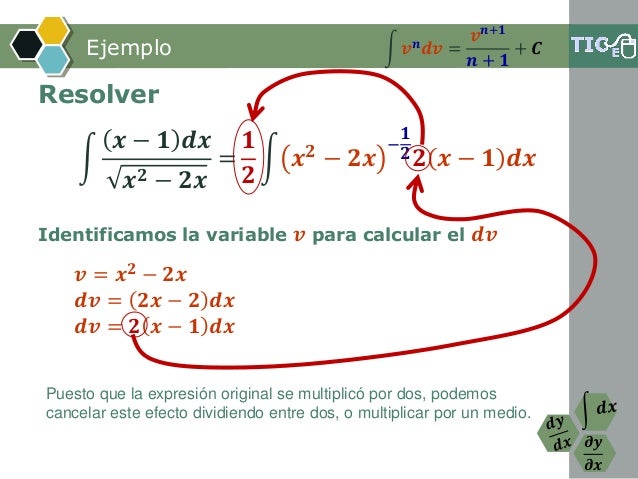

You can also see more double integral examples from the special cases of interpreting double integrals as area and double integrals as volume. To go from Example 2 to Example 2', we “changed the order ofĮxamples of changing the order of integration in double Thankfully, this does agree with the answer we obtained in Example 2. Since for any constant $c$, the integral of $cx$ is We first integrate with respect to $x$ inside the parentheses.Ĭonstant during this integration step. \int_0^1 \left( \int_0^2 xy^2 dx\right) dy. Rules of Integrals with Examples 1 - Integral of a power function: f(x) x Integral of a Power xn 2 - Integral of a function f multiplied by a constant k. Solution: We will compute the double integral as the

Where $\dlr$ is the rectangle defined by $0 \le x \le 2$ and $0 \le y \le 1$ pictured below. The operation of finding an indefinite integral is called integration.The simplest example of a double integral over a rectangle and then Is an arbitrary constant one therefore writes Then any other primitive of it has the form $ F + C $, The indefinite integral of a function $ f $ The indefinite integral of a given real-valued function on an interval on the real axis is defined as the collection of all its primitives on that interval, that is, functions whose derivatives are the given function. The basic notions of integral calculus are two closely related notions of the integral, namely the indefinite and the definite integral. Measure), which plays an essential role in integral calculus.īy means of integral calculus it became possible to solve by a unified method many theoretical and applied problems, both new ones which earlier had not been amenable to solution, and old ones that had previously required special artificial techniques. The development of the theory and methods of integral calculus took place at the end of 19th century and in the 20th century simultaneously with research into measure theory (cf. In the 19th century, in connection with the appearance of the notion of a limit, integral calculus achieved a logically complete form (in the works of A.L. Lagrange played an essential role in its creation in the 18th century. Euler, Jacob and Johann Bernoulli and J.L. Their investigations were the beginning of an intensive development of mathematical analysis. The fundamental concepts and theory of integral and differential calculus, primarily the relationship between differentiation and integration, as well as their application to the solution of applied problems, were developed in the works of P. Its subsequent application and perfection is associated with the names of several scholars of the 15th–17th centuries. The greatest development of the method of exhaustion in the early period was obtained in the works of Eudoxus (4th century B.C.) and especially Archimedes (3rd century B.C.). In this sense, the method of exhaustion can be regarded as an early method of integration. It is based on the approximation of the objects under consideration by stepped figures or bodies, composed of simplest planar figures or special bodies (rectangles, parallelopipeds, cylinders, etc.). This method arose in the solution of problems on calculating areas of plane figures and surfaces, volumes of solid bodies, and in the solution of certain problems in statistics and hydrodynamics. As we have seen, the concept of integration is finding the accumulation of one variable multiplied by another (related) variable. The origin of integral calculus goes back to the early period of development of mathematics and it is related to the method of exhaustion developed by the mathematicians of Ancient Greece (cf. Integral calculus is intimately related to differential calculus, and together with it constitutes the foundation of mathematical analysis. The branch of mathematics in which the notion of an integral, its properties and methods of calculation are studied.


 0 kommentar(er)
0 kommentar(er)
